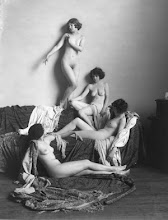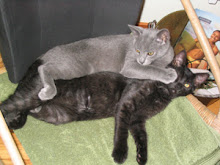1249.
Bringing in Cadbury chocolate, a progression of dress uniform from military wear to something more slapstick, removing extra bodies, making the process of falling in love faster, eliminating the statement of ideas. You don't need to show your work -- you have to trust at some point that if you throw A, B, C, D up there, you can skip E, include F, and then go G J L P S, and if there's momentum, people feel like they're flying over buildings -- with you!
Here's a trick to making a scene move faster by slowing it down at first: your character has a single penetrating desire all the way through a scene. But, upon meeting another character, he wants something different. A kid wants a goldfish for his birthday. He meets a bigger, cooler kid who convinces him he wants a piranha. Now the kid wants a piranha. He gets the goldfish at the end and is disappointed. Okay, that's fine. But: you also in rewriting figure out that the big kid wants the kid's goldfish, so he can feed it to his piranha -- but he isn't going to say that. So the interchange isn't just about what one character wants but two and how they interact and what secret agendas are on the table. That makes it seem faster even if it's slower.
Next: same stuff as above, plus: parents will save us; bridge; chocolate, again; propaganda; timing Wod reveal; "ally mate Mary B," the last of which I don't know what it means. My handwriting is terrible.
Sunday, October 14, 2007
Subscribe to:
Post Comments (Atom)





5 comments:
This reminds me of those collectors who manipulate things and people...
Frighteningly perceptive, Rob. How would a painter do it?
Depends upon the painter, I guess. A visual bait and switch might work: Draw the viewer in with a seductive component of the work--something painted in either a gorgeous style, or just plain beautiful to look at--only to lead them to the true target. The composition would be key, to pull their eyes away from the visual siren. John Currin has the ability to do this, but in the end, doesn't have much to say, so you're left hanging at the seduction. Your bags are all packed, but you wind up having no place to go.
What I like so much about the goldfish/piranha scenario is that you can delve into the minds of both characters, revealing simple/complex desires and motives.
And you build a third mind: how they influence each other. The issue is POV and not violating it so much that the reader goes WTF. That would be the POVWTF conundrum. They teach you that in writing school. You learn that in painting school?
Not so much. We did learn a bit about the artist as manipulator. Then one day, years later, you're looking at Magritte's "Ceci n'est pas une pipe", and it hits you like one of Ignatz's bricks: all we do is manipulate. We manipulate the pigment-to-medium ratio, where the pigment goes on the canvas, what types of imagery brings a viewer in/pushes a viewer out. We manipulate. The trick is, as Guston points out, keeping the manipulation honest.
Post a Comment